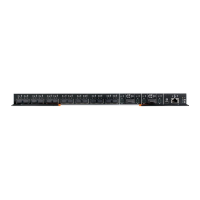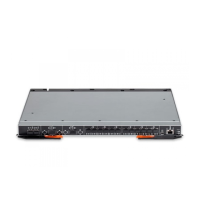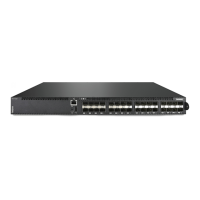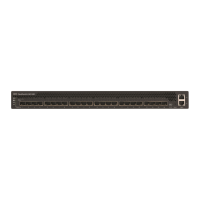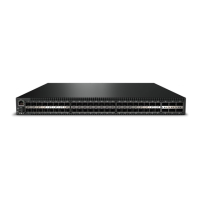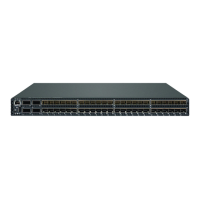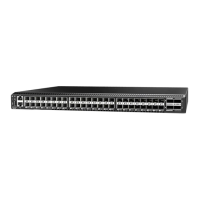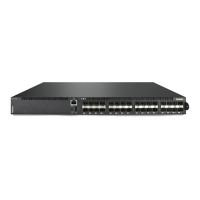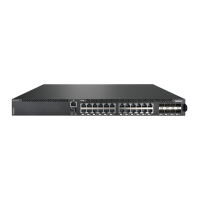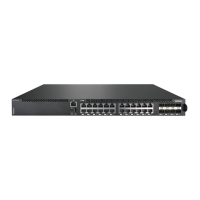162 CN4093 Application Guide for N/OS 8.4
Static LAGs
WhenyoucreateandenableastaticLAG,theLAGmembers(switchports)takeon
certainsettingsnecessaryforcorrectoperationoftheaggregationfeature.
Before Configuring Static LAGs
Beforeyouconfigure yourLAG,youmustconsiderthesesettings,alongwith
specificconfigurationrules,asfollows:
Readtheconfigurationrulesprovidedinthesection,“StaticLAGConfiguration
Rules”onpage 162.”
DeterminewhichswitchportsaretobecomeLAGmembers(thespecificports
makinguptheLAG).
Ensurethatthechosenswitchportsaresettoenabled.
EnsureallmemberportsinaLAGhavethesameVLANconfiguration.
ConsiderhowtheexistingSpanningTreewillreacttothenewLAG
configuration.See“SpanningTreeProtocols”onpage 171forconfiguration
guidelines.
ConsiderhowexistingVLANswillbeaffectedbytheadditionofaLAG.
Static LAG Configuration Rules
Theaggregationfeatureoperatesaccordingtospecificconfigurationrules.When
creatingLAGs,considerthefollowingrulesthatdeterminehowaLAGreactsin
anynetworktopology:
AllLAGsmustoriginatefromonenetworkentity(asingledeviceormultiple
devicesactinginastack)andleadtoonedestinationentity.Forexample,you
cannotcombinelinksfromtwodifferentserversintooneLAG.
AnyphysicalswitchportcanbelongtoonlyoneLAG.
Dependingonportavailability,theswitchsupportsupto24portsineachLAG.
Internalports(INTx)andexternalports(EXTx)cannotbecomemembersofthe
sameLAG.
Aggregationfromthird‐partydevicesmustcomplywithCisco
®
EtherChannel
®
technology.
AllLAGmemberportsmustbeassignedtothesameVLANconfiguration
beforetheLAGcanbeenabled.
IfyouchangetheVLANsettingsofanyLAGmember,youcannotapply the
changeuntilyouchangetheVLANsettingsofallLAGmembers.
WhenanactiveportisconfiguredinaLAG,theportbecomesaLAGmember
whenyouenabletheLAG.TheSpanningTreeparametersfortheportthen
changetoreflectthenewLAGsettings.
AllLAGmembersmustbeinthesameSpanningTreeGroup(STG)andcan
belongtoonlyoneSpanningTreeGroup(STG).Howeverifallportsaretagged,
thenallLAGportscanbelongtomultipleSTGs.

